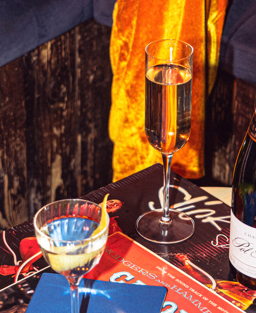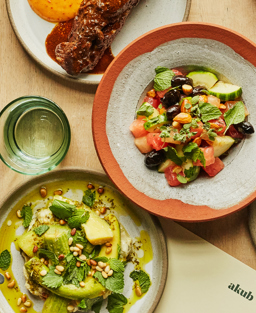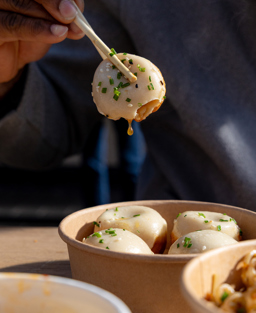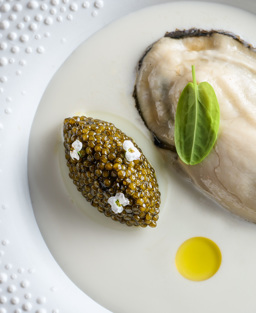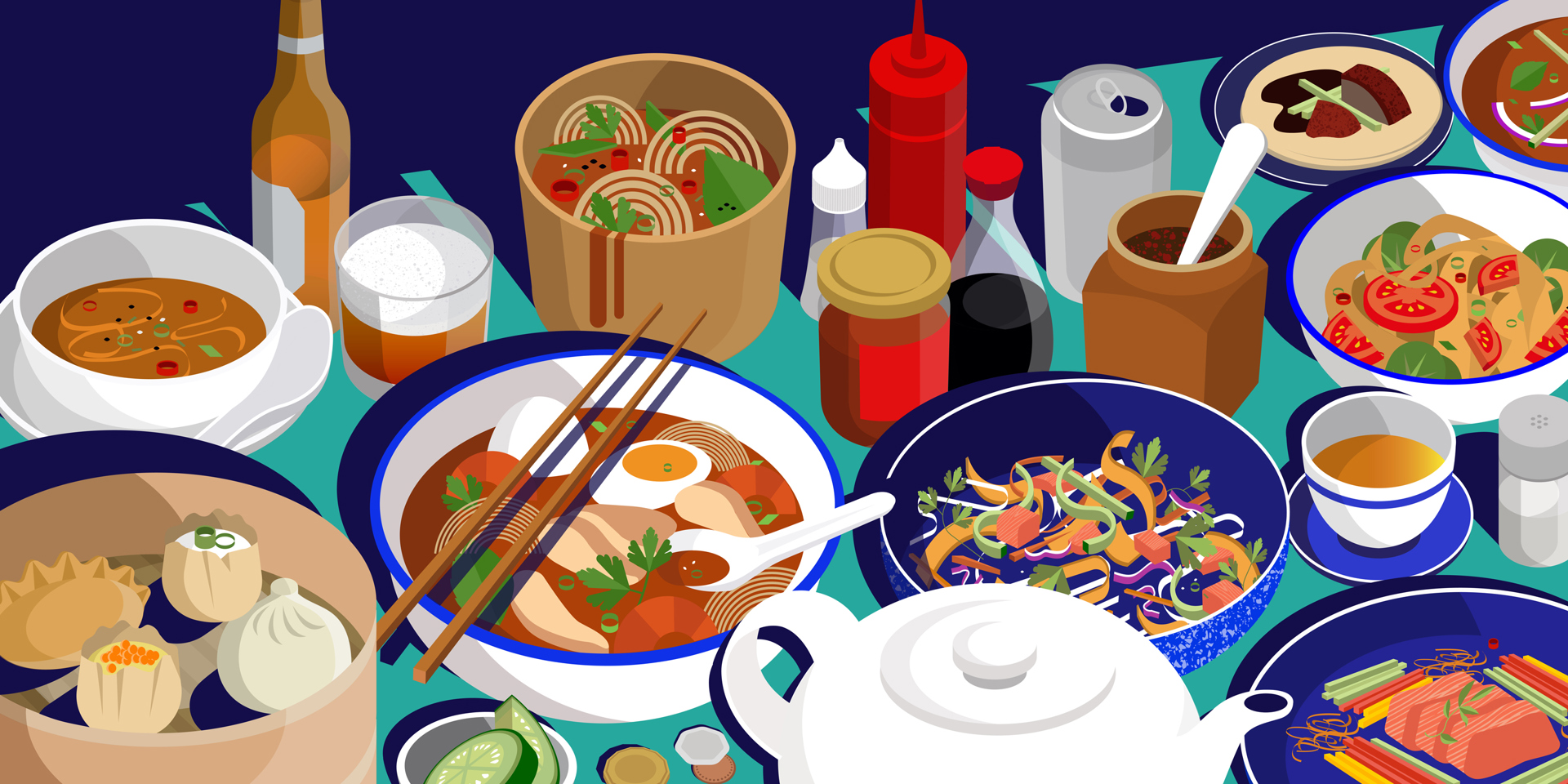

The best Chinese dishes in London – and where to find them
With Chinese New Year firmly on the horizon (29 January 2025 marks the beginning of the Year of the Snake), we’ve asked some of the capital’s finest food writers to hunt down its most exceptional Chinese cuisine. From cheap and cheerful to as-fancy-as-you-like, here’s what they picked (plus, some of our own honourable mentions along the way...)
01/01/2025
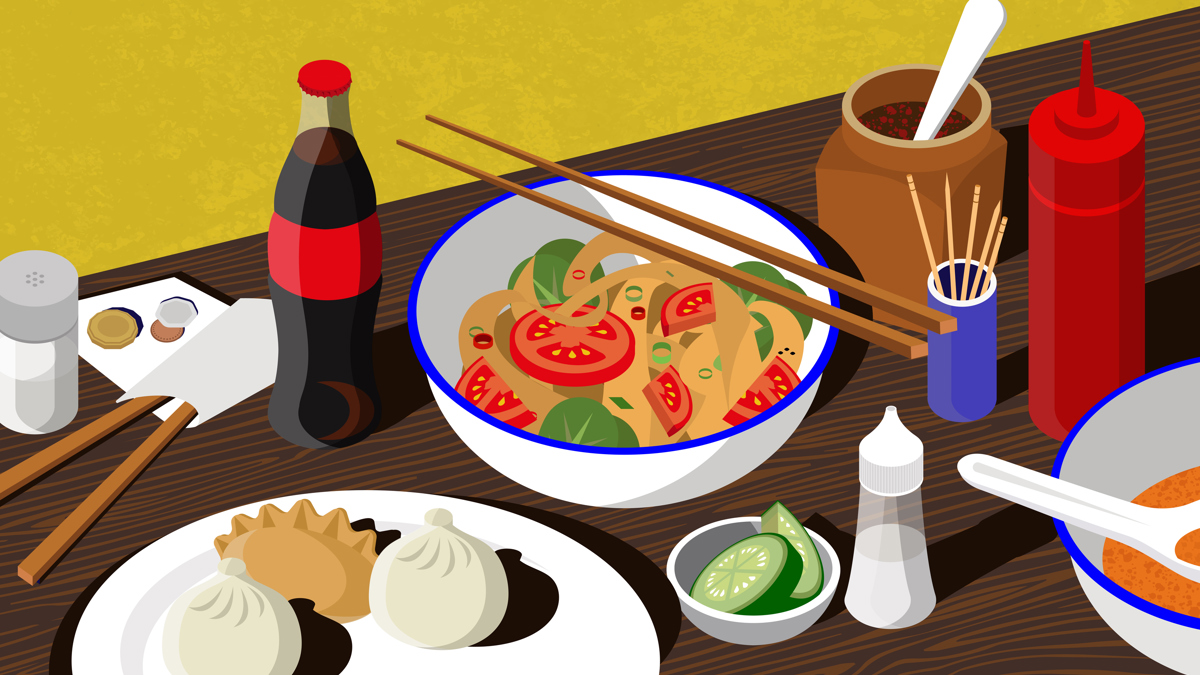
Tomato and egg noodles
Where? Lanzhou Lamian Noodle Bar
Nearest Tube station: Leicester Square
Noodles are magical things, aren’t they? They may look deceptively simple, using only wheat flour, salt and water, but they have the innate power to comfort and soothe. At Lanzhou Lamian Noodle Bar on Cranbourn Street on the fringes of Chinatown, right outside Leicester Square station, you’ll find some of the city’s best. Here, you’ll spot kitchen staff kneading, pulling, twisting and cutting the noodle dough with such dexterity, precision and skill, it’ll make you think the noodle strands have a life of their own. When it comes to ordering, choose your own adventure with the thickness (very thin, thin, regular, medium, thick, flat or vermicelli), the style of handmade noodles (pulled or knife-cut) and the base (soup, dry or stir-fried) – all can be served with a variety of toppings. Paralysed by the sheer choice available? The impossibly silky and satisfying tomato and egg, dry-style, knife-cut noodles is a great place to start. Also, since there are only a few places to sit inside and it gets pretty busy, expect to be sharing tables with strangers.
HIGH LIFE'S HONOURABLE MENTION
‘Memories of Peking Duck’ at A Wong
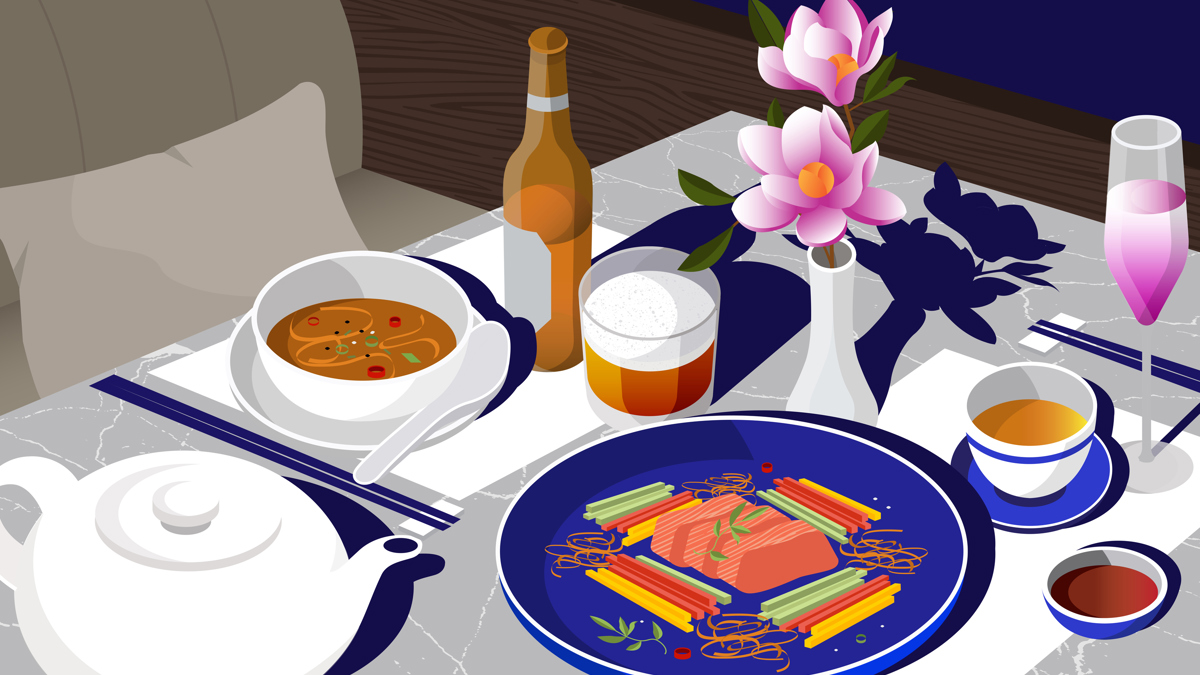
Lo hei salad
Where? Canton Blue at the Peninsula London
Nearest Tube station: Hyde Park Corner
Lo hei – meaning ‘tossing up good fortune’ in Cantonese – is a beloved Chinese family tradition, especially among diasporic communities from Southeast Asia, taking centre stage during Lunar New Year Eve reunion dinners (and the 15-day celebration that proceeds it). This vibrant salad, typically served as a starter to an evening of feasting, symbolises wishes for the year ahead. Each ingredient carries significance: grapefruit (or pomelo) for luck, radish for eternal youth, leek for longevity, peppers for career success and fish (in this case, the finest Loch Duart salmon) for abundance. A rich plum, soy and ginger dressing ties it all together, representing stronger bonds with loved ones, family and friends (drizzled in a circular motion, inviting wealth from all directions). The ritual is lively: diners toss the salad with their chopsticks while chanting auspicious phrases. It is said that the higher the toss and louder the wishes, the better your fortune for the New Year. While it isn’t the most show-stopping dish at the Peninsula’s fine-dining establishment – the Silver Hill Peking duck or blue lobster usually take this title – it is a rare find in London. And it’s a permanent menu fixture at Canton Blue, letting you toss your luck at any time of year.
HIGH LIFE'S HONOURABLE MENTION
Char Siu buns at Kowloon Bakery
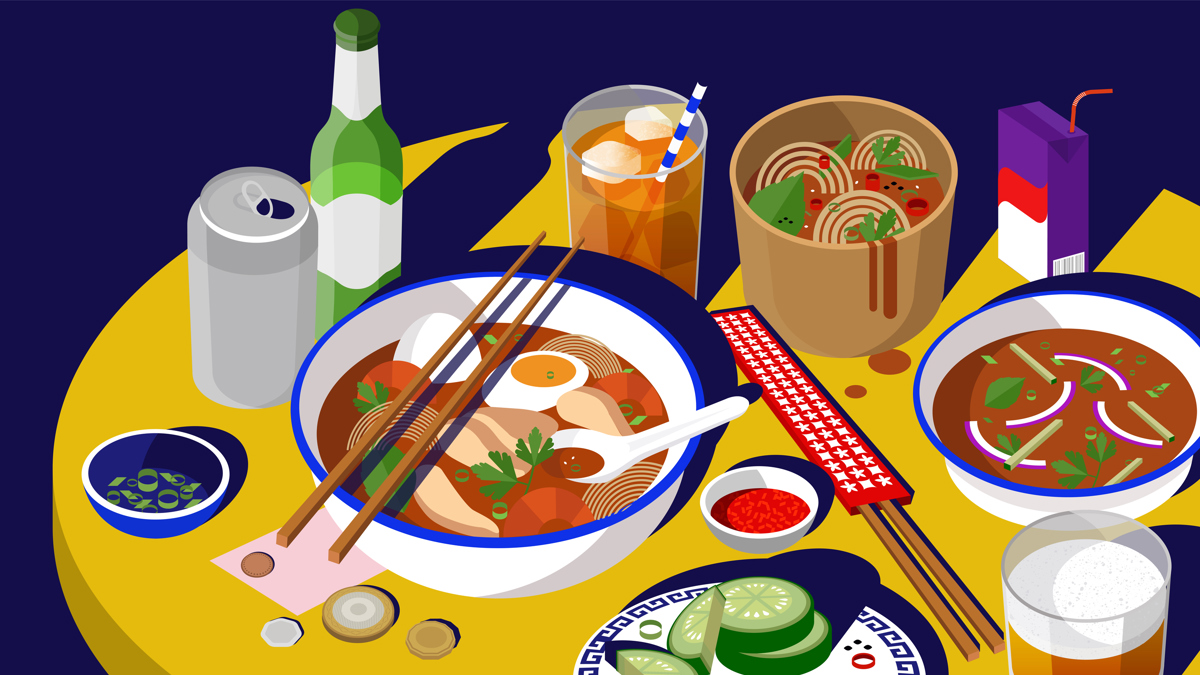
Prawn mee
Where? 7 Floor Malaysia Tea Room
Nearest Tube station: Holborn
This is the best prawn mee in town (possibly the country). I think about it at least twice a week. It has that deep earthy umami that you get from prawn broth, a hint of sweetness and heat that clears the sinuses without being the focal point. It’s a labour of love – to be able to get that rich, layered flavour would take days. It’s served fairly traditionally at 7 Floor Malaysian Tea Room, with vermicelli rice noodles and thick egg noodles, perfect prawns, succulent slices of chicken and fish balls. I love that the dish represents migration and fusion: known as hokkien mee in Penang, and har mee in the rest of Malaysia (har meaning prawn in Cantonese and mee meaning noodles in Malay), this dish is a perfect product of Chinese Peranakan heritage. ‘Peranakan’ is most often applied to those who trace their history back to the Chinese men who migrated to the Strait of Malacca region and married local women in the 18th and 19th centuries. Together, these families created a distinct cultural identity – blending local traditions with Chinese cultural practices and cooking techniques from indigenous communities. Har mee – a combination of Chinese and Malay words – is now known in English-speaking countries as prawn mee, wonderfully incorporating the language of the place it came from with the place where it is now enjoyed!
HIGH LIFE'S HONOURABLE MENTION
Mango cake at Golden Gate Cake Shop and afternoon Tea at Lucy Wong
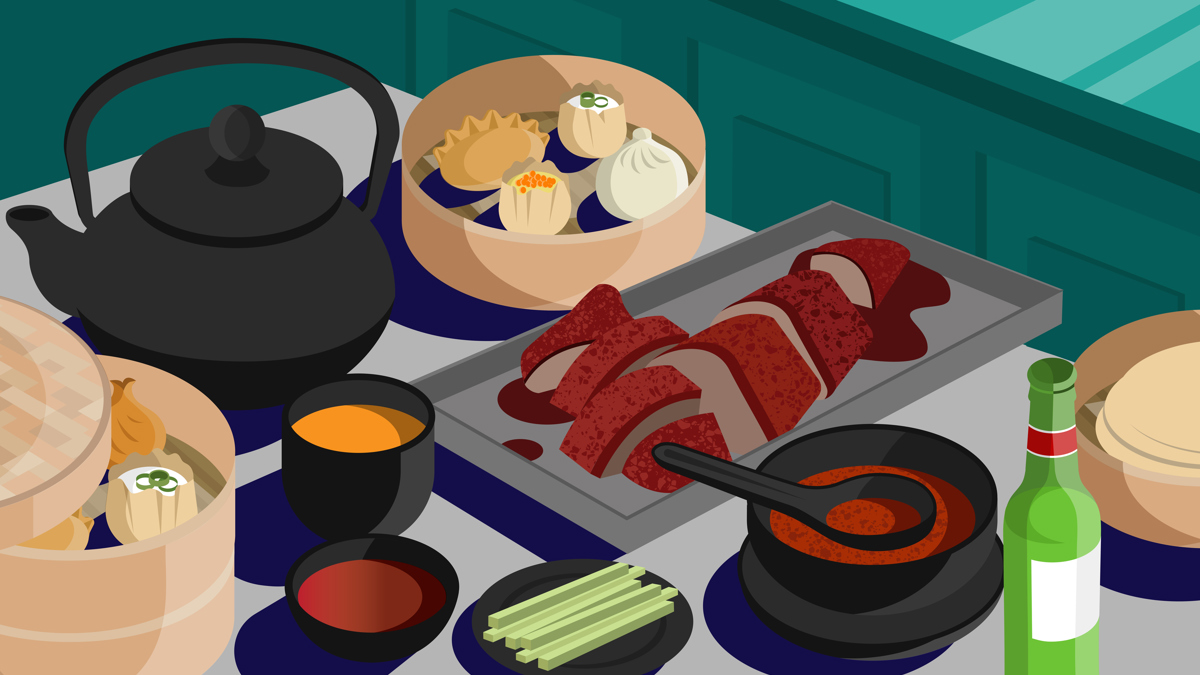
Roast Duck
Where? Dim Sum and Duck
Nearest Tube station: King’s Cross
No Lunar New Year celebration worth its MSG is complete without at least several sources of protein. While dumplings, spring rolls, whole chicken or steamed fish take pride of place for their traditional associations with wealth, prosperity or family, nothing says festive treat more than a glistening, crisp-skinned roast duck. Some might argue that the occasion merits the theatrics of a Peking duck: slivers of the best cuts of amber skin dipped in sugar and savoured first like a delicate sweet; choice morsels wrapped with spring onion and cucumber in just-steamed pancakes; then the rest of the bird sautéed in an indulgent fried rice. But the humble, everyday Cantonese version has its fans, too. My spidey taste buds tingled when, on my first visit to Dim Sum and Duck, I watched a regular order two portions for himself: one to eat on the spot, and one to take away. The no-frills family-run café has since gone stratospheric thanks to rave reviews of its stellar dumplings, so my advice is to go early or risk winding your way to the top of the one-hour queue only to find that the best-value plate of duck in town has sold out.
HIGH LIFE'S HONOURABLE MENTION
Crispy pork belly at Gerrard’s Corner
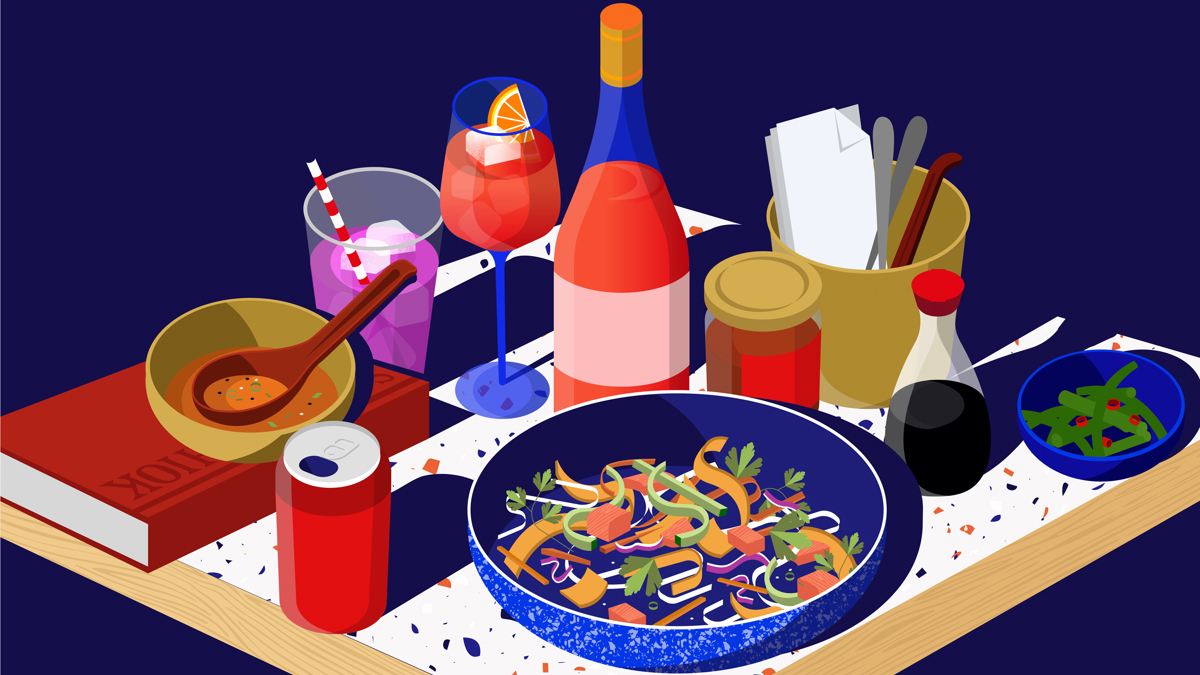
Yee sang salad
Where? Sambal Shiok
Nearest Tube station: Holloway Road
If interactive dining is your sort of thing, then look no further than yee sang (another name for lo hei salad, as detailed by Uwern, above). And while lo hei means ‘tossing up good fortune’, yee sang simply translates to raw fish, which you’ll find used at this North London institution. Here, the famous ‘Prosperity Toss Salad’ features on the special New Year menu and, as at the Peninsula, uses carefully picked vegetables that are representative of good luck and prosperity, bound together by a refreshing and sweet plum dressing, and tossed together by the diners at the table. Unlike the five-star hotel, however, this fish is served raw, as is traditional. The ritual remains the same, though, and height is the name of the game here, with the higher the toss, the greater the luck for those at the table. You’ll use chopsticks and (should) shout phrases of luck corresponding to each ingredient (such as “Da ji da li” – wishing good luck and high profits – while squeezing the lime), making this a recipe for a delicious, though messy, start to any favour-inducing Chinese New Year meal. Year-round, though, Sambal Shiok is known mainly for its Malaysian laksa – a spicy coconut noodle soup – so don’t leave without trying this, too. Chef-owner Mandy Yin rustles up a special mix of two distinct laksas and it’s my absolute favourite in London. Just be warned – the spice is strong!


